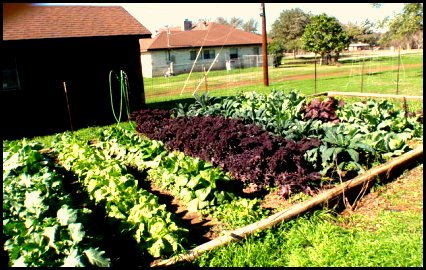Promises and resolutions for me – with encouragement from members
of my family – normally include eating better and exercising more.
But as a gardener, I have my own alternative list - which for me is the
more important one! Some of these include:
1. Hang up the phone and garden. As cell phones continue to take
over our lives, gardening can be a haven and a sanctuary from the
encroaching world of technology. We must all remember to smell
the fresh air, listen to the birds and get the kids to join us outside!
So I plan leave the phone in the house somewhere, and venture out-
side untethered, and unreachable.
2. Shrink the lawn. With Pam Penick’s book Lawn Gone! (Ten Speed
Press) as a guide, we are all realizing that there are a myriad of options
for replacing the lawn with pretty, drought tolerant plants that will
save you money and time… and help save the planet as we become
accustomed to gardening in drought conditions.
3. Plant more trees: I would like to plant one a month. Trees add value
to a home and can help with the utility bills as well. By planting ever-
green trees on the north side of your home, they can act as a wind-
break from the cold, north winter winds. Shade trees planted close to
the house provide cooling shade in the spring, summer, and fall. Decid-
uous trees provide shade in the summer and allow warming sunlight
in the winter after they shed their leaves. Trees also absorb carbon
dioxide, and this can help slow down global warming.
4. Plant or expand the vegetable garden. By growing your own vege-
tables, you become more independent – less trips to the grocery and
less trips to the filling station. Working the soil and eating the produce
that you have grown is highly rewarding. Gardening is also great
exercise.
5. Start composting. By saving and composting grass clippings,
leaves, and kitchen scraps, you can make rich compost and mulch
for your garden and flower beds. The material is free and just takes
a little bit of effort to convert it to something useful. Compost will
save you money and will help to limit the waste that goes to the
landfill.
6. Start and expand your use of organic practices. Besides making
your own compost, use organic fertilizers, insecticides, fungicides,
and herbicides. This will make the environment less toxic. There
has never been as many organic alternatives on the market as there
are now. In addition, consider setting up a system of rain barrels,
and shift to drip and soaker hose irrigation.
7. Start gardening projects with your neighbor or perhaps the
community. Target a piece of ground that’s going to waste and produce
some vegetables for the Food Bank. Reap the mental rewards of volun-
teering!
8. Besides vegetables, establish other forms of food you can grow.
Central Texas is a perfect place for asparagus, grapes, berries, arti-
chokes, peaches, pears, apples, plums, olives, apricots, nectarines,
and pomegranates. These plants are perennials and will produce
year after year without replanting.
_____________________________________________________
Well, that’s a start for 2015. Today I'm going to plant my first tree
of the year, after eating my good luck food: cornbread for gold,
collards for dollar bills, and black-eyed peas for pennies.
Happy New Year everyone!


 Visit the website:
Visit the website: